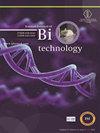CRISPR介导的异六倍体油料作物Camelina sativa肉桂酰辅酶A还原酶4突变揭示其在抗核盘病中的关键作用
IF 1.6
4区 生物学
Q4 BIOTECHNOLOGY & APPLIED MICROBIOLOGY
引用次数: 0
摘要
背景:核盘菌(Sclerotinia sclerodorum,Ss)是一种寄主范围广泛的坏死性子囊菌,影响着400多种植物。Ss会导致Camelina sativa(Cs)的茎腐病,Camelina sativa是一种异六倍体十字花科植物,被认为是一种低投入作物,具有适合用作生物燃料和润滑剂的工业油特性。组织化学和分子研究将C.sativa对Ss的抗性与细胞壁木质化联系起来(Eynck等人,2012),并报道了肉桂酰辅酶A还原酶4(CsCCR4)基因在Cs抗性系CN114263中的组成型表达。现代育种工作,如基因编辑,需要改进商业品系,并限制作物损失的风险,这对生产者来说是巨大的。目的:通过CRISPR/Cas9介导的基因编辑,我们产生了CN114263山茶属品系的CsCR4敲除突变体,以研究单核生物合成的重要性以及CsCR4在山茶属抗Ss中的作用。材料和方法:30株T1植物通过花浸法转化,然后在筛选程序的第一步中使用草甘膦喷雾,并通过PCR方法进行确认。用数字液滴聚合酶链式反应(ddPCR)测定T1和T2祖细胞中转基因的T-DNA拷贝数变异,T-DNA-CNV,并用脱落分析技术检测T1和T2代中CsCCR4同源物三个拷贝的突变发生情况。为了确保T2植物中产生的突变体是真实的,对其中三种进行了位于Cas9/gRNA特异性切割热点两侧的TOPO TA测序。结果:在T1代中,25株植物被证实在相应的山茶属基因组中具有1至9个T-DNA拷贝。在T2代中,对群体进行CsCCR4基因潜在突变的筛选。在CsCCR4的三个拷贝中证实了各种类型的突变,包括插入和缺失。事实上,CRISPR系统可能在分别编号为T2植物10、T2植物15和T2植物19的事件中切割了一个、两个或三个基因拷贝。T3植物19在上一代的所有版本的CsCR4中都显示出突变,其对核盘菌入侵具有易感性,并被保留为真正的CsCCR4突变体材料,用于进一步研究山茶菌-核盘菌的相互作用。CsCCR4的突变是通过容易出错的非同源末端连接(NHEJ)细胞核DNA修复途径发生的。Ss对早花T3代的挑战。与野生型抗性对照亲本CN114263相比,在CsCCR4的217位具有导致过早终止密码子突变的T3植物对Ss的抗性受损。结论:利用ddPCR可以很容易地识别T1和T2祖细胞中的T-DNA CNV和CsCCR4同源物的突变发生。我们表明,CRISPR/Cas9介导的突变是一种不错的技术,可以用来加快突变系的发育,这有助于了解CsCCR4基因在对病原体的防御反应中的活性。本文章由计算机程序翻译,如有差异,请以英文原文为准。
CRISPR- mediated Mutation in Cinnamoyl- CoA Reductase 4 in Allohexaploid Oilseed Crop Camelina sativa, Revealed its Pivotal Role in Resistance Against Sclerotinia sclerotiorum
Background: Sclerotinia sclerotiorum (Ss) is a broad host range necrotrophic ascomycete fungus affecting over 400 plant species. Ss causes stem rot disease on Camelina sativa (Cs) an allohexaploid crucifer species that is promoted as a low input crop and industrial oil attributes suitable as biofuel and lubricant. Histochemical and molecular studies has linked resistance to Ss in C. sativa with the cell wall lignification (Eynck et al., 2012) and reported constitutive expression of Cinnamoyl-CoA Reductase 4 (CsCCR4) gene, in the Cs resistant line CN114263. Modern breeding efforts, such as gene editing, are needed to improve commercial lines and to limit the risk of crop loss which would be substantial to producers. Objectives: To investigate the importance of monolignol biosynthesis and the role of CsCCR4 in Camelina resistance to Ss we generated CsCCR4 knockout mutants of CN114263 Camelina line using CRISPR/Cas9-mediated gene editing. Materials and Methods: Thirty T1 plants were produced via floral dip transformation followed by glyphosate spraying that was used in the first step of screening procedures and were confirmed by PCR method. Transgene’s T-DNA copy number variation, T-DNA CNV, in T1 and T2 progenitors were determined using digital droplet PCR (ddPCR) and the occurrence of mutation in the three copies of CsCCR4 homeologues in T1 and T2 generations were scrutinized by drop-off assay technique. To make sure that if the created mutants in T2 plants are real, TOPO TA sequencing flanking the Cas9/gRNA specific hot point of cleavage for three of them was conducted. Results: In the T1 generation, 25 plants were confirmed which had between one to nine T-DNA copies in the corresponding Camelina genome. In T2 generation the population were screened for potential mutation in CsCCR4 gene. Various types of mutations, including insertions and deletions, were demonstrated in three copies of CsCCR4. In fact, CRISPR system could have cut one, two or three copies of the gene in events numbered T2-plant 10, T2-plant 15 and T2-plant 19, respectively. The T3-plant 19 which showed mutation in all versions of CsCCR4 in previous generation had susceptibility to S. sclerotiorum invasion and was kept as real csccr4 mutant material for further investigations of Camelina-Sclerotinia interaction. Mutation in CsCCR4 had occurred through error-prone none- homologous end joining (NHEJ) nucleus DNA repair pathway. Ss challenge on the early flowering T3 generation. The T3 plants with mutation causing premature stop codon at position 217 of CsCCR4 were compromised in their resistance to Ss compared to the wildtype resistant control parent CN114263. Conclusion: Using ddPCR it easily was possible to identify both the T-DNA CNV and occurrence of mutation in CsCCR4 homeologues in T1 and T2 progenitors. We illustrated that CRISPR/Cas9-mediated mutation is a decent technique that can be utilized to expedite the mutant line development which could assist to figure out the activity of a CsCCR4 gene in defense responses to the pathogens in C. sativa as prospective oilseed crop for biodiesel production.
求助全文
通过发布文献求助,成功后即可免费获取论文全文。
去求助
来源期刊

Iranian Journal of Biotechnology
BIOTECHNOLOGY & APPLIED MICROBIOLOGY-
CiteScore
2.60
自引率
7.70%
发文量
20
期刊介绍:
Iranian Journal of Biotechnology (IJB) is published quarterly by the National Institute of Genetic Engineering and Biotechnology. IJB publishes original scientific research papers in the broad area of Biotechnology such as, Agriculture, Animal and Marine Sciences, Basic Sciences, Bioinformatics, Biosafety and Bioethics, Environment, Industry and Mining and Medical Sciences.
 求助内容:
求助内容: 应助结果提醒方式:
应助结果提醒方式:


